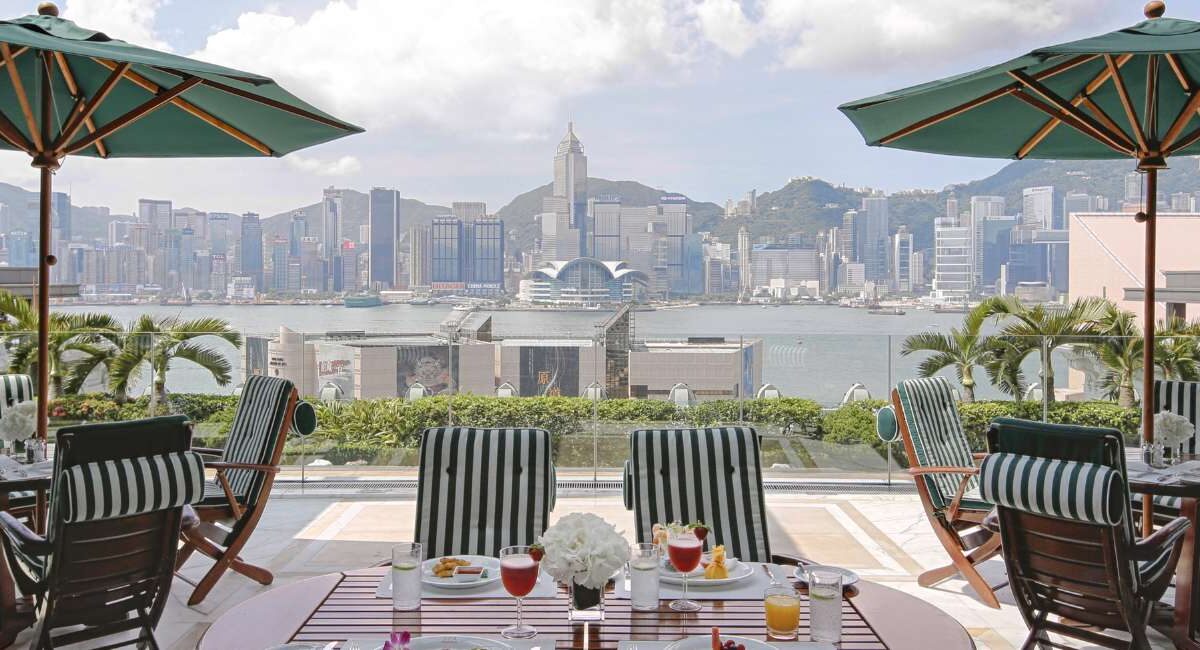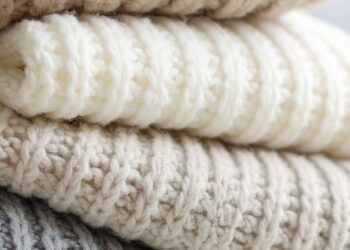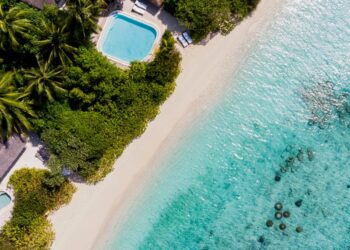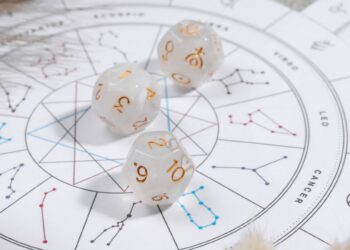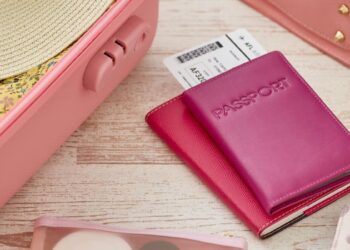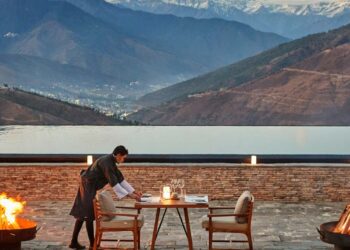The greenery is astounding.
From inside the glass funicular tramway — inching its way up the steep incline to Hong Kong’s famous lookout Peak — I peer onto lush palms and reddish crotons. Intellectually, I know of the city’s verdant nature. Expat friends who now live here and hotel staff eager to share the beauty of their city (home to 7.4 million residents) continuously sing praises of Hong Kong’s lush greenery, tropical flowers, rubber trees, sandy beaches, and seemingly endless walking paths.
But this is my first time experiencing it.
Two decades ago, I made my first visit to Hong Kong as one of just three U.S. writers invited to preview and exclusively experience the just-opened, new-at-that-time spa at The Peninsula Hong Kong. Of course, my transport this time (aboard Cathay Pacific) — in my own private business-class pod, lay-flat seat, cushy duvet, and fresh (Michelin-star) cuisine — is far more dreamy (and quite honestly, the only way to fly 15 hours to Hong Kong). Immediately upon arrival to the hotel — after a lavish welcome of fresh-cut flowers and housemade chocolates — I sequestered into the spa’s high-rise, glassed-in sauna overlooking Victoria Harbor to stave off my jetlag. There, in a foggy Lost in Translation moment, I watched neon lights flashing with familiar and unfamiliar signage; boats gliding silently below. I spent my entire stay (three full days) cocooned inside the spa — and hotel — experiencing treatments (by ESPA at that time), practicing yoga, learning the art of tai chi on the rooftop with a master instructor, and sipping exotic teas in the watery relaxation lounge.
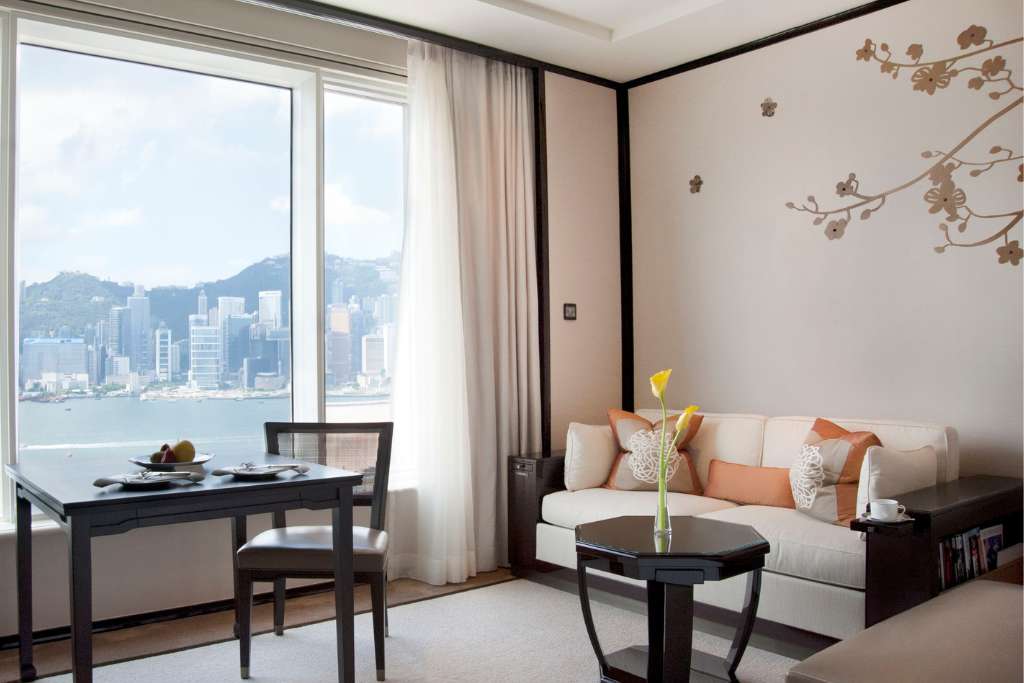
Now, on my return to ‘The Grande Dame of the Far East,’ as the legendary hotel is known, so much is instantly familiar — the white-and-gold-capped bellmen who greet me by the “door gods” (lion statuettes) said to protect all who enter, the still-tranquil glass sauna, and my seemingly even more eloquent room (I don’t recall the swanky disappearing make-up mirror and nail dryer) with a harbor view.
Grande Dame of the Far East
“Hong Kong is the Monaco of Asia,” says Carson Glover, a former New Yorker now living in Hong Kong. “It’s fabulous. We have great weather, top restaurants and shopping, the freshest fruit (mango, coconut, papaya daily), tons of green space,” he pauses now. “And a truly fascinating backstory.”
When the Kadoorie family opened The Peninsula Hong Kong in 1928 on the Kowloon side of the harbor, people thought they were crazy. Nothing else existed — the area was basically a mucky port where weary travelers arriving from Europe disembarked before crossing over to Hong Kong Island to the city’s sole hotel. The debut of the opulent, art deco-style, Peninsula (now the oldest hotel in the city) changed everything. With its opening came page boys, clad in all-white suits and signature hats, to greet passengers and collect their luggage. Concerts were held, lavish dinners served on the hotel’s terrace, and the glitterati came out in droves, including 1930s-era Hollywood stars of the time: Charlie Chaplin and Paulette Goddard.
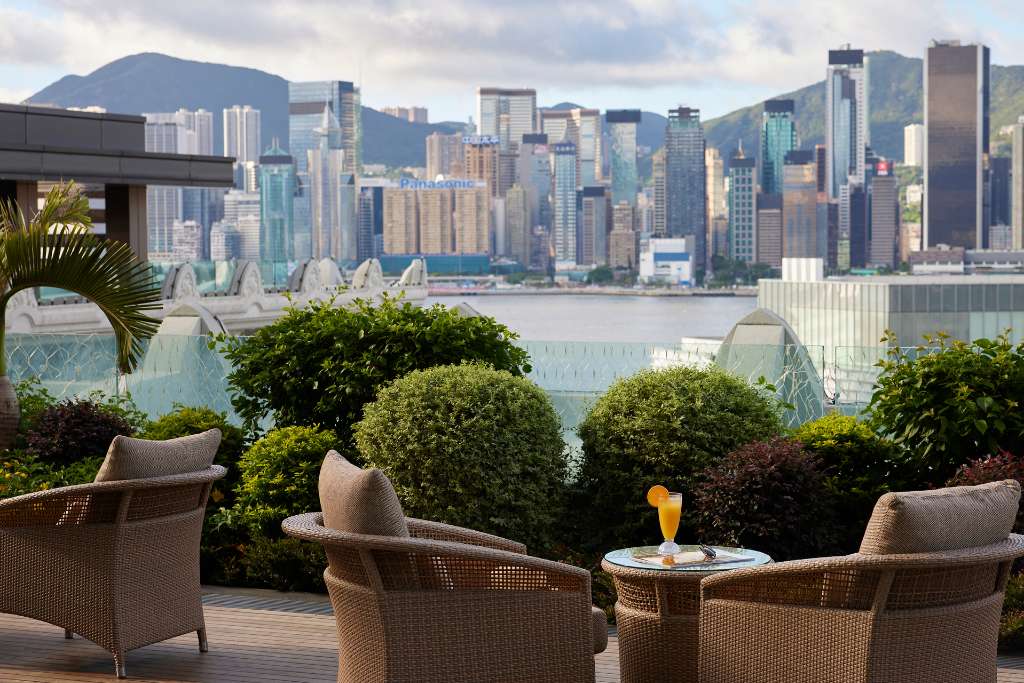
In the decades since, The Peninsula Hong Kong has continued to set the bar high in every area from service and cuisine to fashion, art, and architecture to entertainment and wellness. Home to the oldest fashion promenade in the city (think Tiffany & Co., Baccarat, Chanel, Dior, Hermès to name a few), The Peninsula debuted one of Hong Kong’s first chef tables, is home to two Michelin-star restaurants, Gaddi’s (French) and Spring Moon (Cantonese), has emerged as a generational, celebratory hotel (milestone birthdays, anniversaries, weddings), and is renowned for its fleet of Peninsula green Rolls-Royces (my transport to and from the airport). The landmark hotel has also been instrumental in changing the city’s spa culture.
During my visit all those years ago, I was struck by an insight the spa director, an expat from Scotland, shared. “Hong Kong is an extreme city,” she said. “It’s very hectic and intense. People work extremely hard here and are very ambitious, driven, and highly efficient. They want to look good and feel good, but in terms of spa culture, Hong Kong is about quick treatments — people rush in and get back out on the streets. With this [new spa], Peninsula wanted to change that mindset and to bring a portal of calm and relaxation; a sense of balance. Time and space are a luxury everywhere, but especially here.”
Spa Mission Accomplished
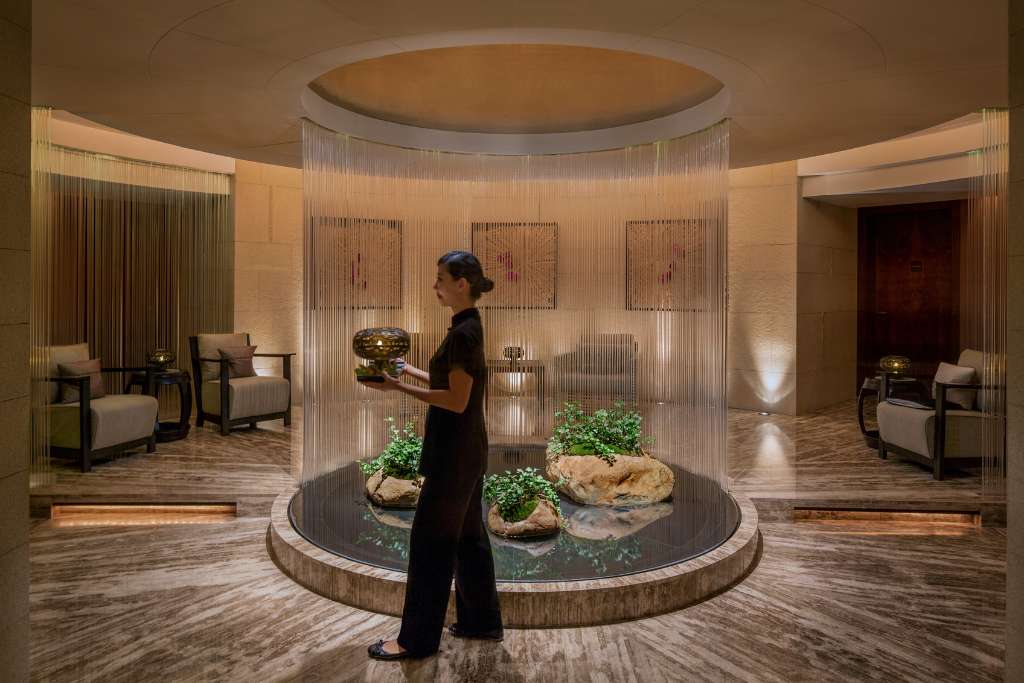
On this visit, only seconds into my consultation with current spa director Connie Pong, I can attest that the spa’s mission has been accomplished. Sitting side by side — a tray of oils and Chinese herbs between us — Pong is explaining Han Therapy, a treatment deeply rooted in ancient Chinese medicine (from the Han Dynasty) which she elevated to bring into the luxury spa environment.
In traditional Chinese medicine which focuses on the five elements: wood, fire, earth, metal, water, focus is on the body’s six meridian [energy] points. Oil is not used and the experience can be painful. “If you go to a local [Chinese medicine] shop and the practitioner works on the meridian line, the pain can be intense,” says Pong. “I wanted to eliminate the pain so guests could relax and enjoy the treatment. But I also wanted them to experience the same therapeutic results.”
My two-hour Han therapy treatment begins by randomly selecting two of the Five Elements bottles — the concept being that I will intuitively choose the oils my body needs most for healing. Though no sniffing is involved, my selection feels easy: yang-man, a blend of juniper, berry, and sandalwood, and yin-woman, a combination of fennel and cinnamon to warm and balance. Both oils represent the water element — which makes sense since I’m a Pisces.
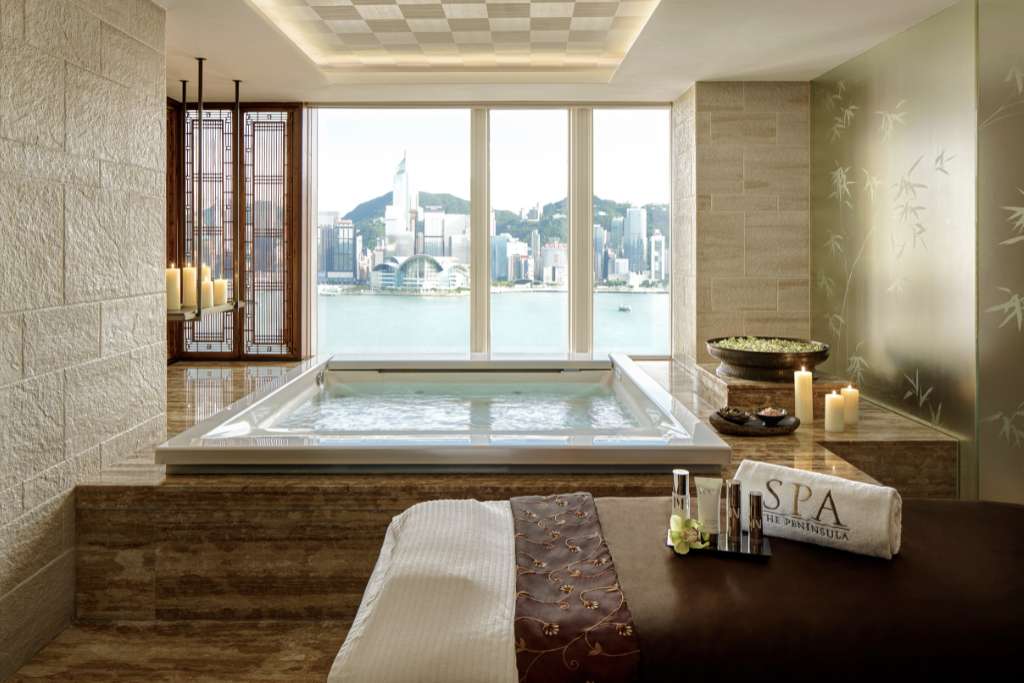
Once on the massage table, Yoki, my therapist, goes to work on each of my meridian points. I feel little to no tension, but when she touches the top of my foot and later, my ankle I nearly jolt from the table. Any discomfort or pain is said to be a result of stagnant energy. I smile as Yoki explains that in traditional Chinese Medicine, both the feet and ankles are connected to the water element, and replay her soothing voice in my head. “Trust your instinct when selecting the oils.”
In a traditional, in-and-out Chinese medicine shop, the entirety of the treatment would remain as a ‘dry’ massage (no oil used). But in this more genteel and luxurious interpretation, Yoki masterfully blends together my pre-selected, water-element oils and applies them in what feels like a dance between deep tissue and gentle lymphatic massage. A facial, using a gua sha tool (white jade) follows, as Yoki works, in gentle strokes, on my lymphatic and even bone; before ending the treatment with a deep-pressure scalp massage.
Stylish Immersions
It is at the Hong Kong Palace Museum, within easy walking distance of the hotel (and designed by the same architect as The Peninsula’s newer tower building), that I better understand the gua sha tool’s Imperial lineage.
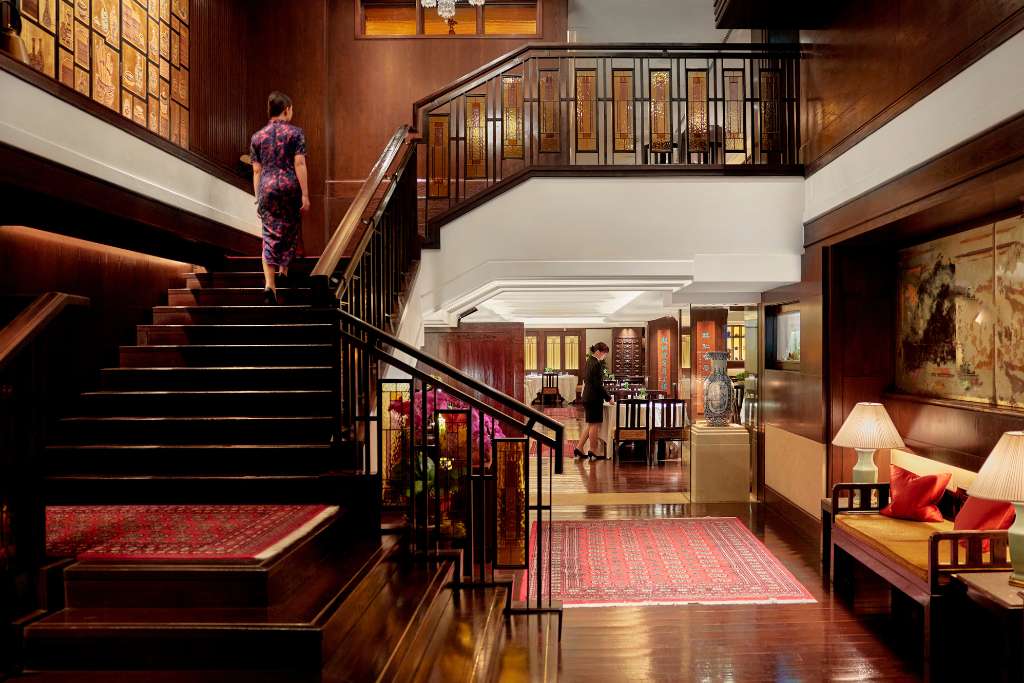
One of the many benefits of staying at The Peninsula Hong Kong is the privy, VIP access to the city’s most prestigious happenings. When I expressed interest in the special exhibit, “From Dawn to Dusk: Life and Art in the Forbidden City” (on display until 2026), I was presented not only with admission, but my own personal guide (be sure to ask for Gigi). One of the first displays of the exhibition details the early-morning ritual of the Imperial emperor who would rise everyday at 4 a.m., wash his face in a porcelain basin, and apply a white jade gua sha (much like the one used in the spa) to the meridian points of his face to release stagnant energy.
Another must-do museum (also in walking distance) is the new M+, a contemporary masterpiece that took two decades to build and finally opened in 2021 during the pandemic. Here, I take in the retrospective of renowned architect I.M. Pei — his work in Society Hill (Philadelphia), the Louvre (Paris), and JFK Library and Museum (Massachusetts) — and afterward, drool over the runway-ready dresses by top Chinese fashion designer Guo Pei. I could stay amid her sparkles and peacock-hued dresses including the “Yellow Queen” that Rhianna wore (in 2015) to the Met Gala, but The Peninsula has a few of its own musts to experience. Starting with the new partnership between the hotel and Hong Kong’s iconic The Star Ferry.

Arriving at Victoria Harbor, I spot immediately the familiar white-capped hotel staff. For the next hour and a half, as the elegant boat — with its teak wood, white banquettes, and Peninsula green pillows — sails the harbor, an elaborate afternoon tea is poured. Three-tiered trays of savories and sweets appear alongside flutes of Champagne, a live jazzy band plays, guests dance. And it’s sheer magic.
But the grand finale comes on The Peninsula’s 30th floor at The China Clipper Lounge. A throw-back to the days when Pam Am’s ‘flying boats’ flew from San Francisco to Hong Kong (a seven-day journey including stop overs). Evoking an art-deco style, the lounge — exclusive to helicopter guests — features pieces of worn luggage once carried by the Clippers’ well-heeled travelers, a polished propeller from a Clipper engine, and raked armchairs, complete with engine piston heads as ashtrays (from the days when smoking was permitted).
Following a safety debriefing, I join three other Peninsula guests for a scenic heli tour above the harbor. Blue water juxtaposes against towering silver skyscrapers and verdant greenery. At various points, the helicopter dips and I spot the Peak lookout where my love for the city’s green spaces started, and the winding road I walked — past makeshift shrines and stunning houses shrouded in rubber trees. I see Repulse Bay and The Verandah, a former hotel (also owned by the Kadoorie family) and now a restaurant, and colorful Kwun Yam shrine, home to Tin Hau, the goddess of the sea, and my favorite, a giant, laughing Buddha statue with polished red toes.
Back on ground, I leave the exclusive aviation-themed lounge to sequester one last time into the spa. A lingering steam and sauna (with a view) is followed by a body treatment by Voya, a hand-harvested seaweed line from Ireland, and facial with Margy’s of Monte Carlo, a performance-driven skincare line from Monaco. Emerging from the spa to pack and soon board the Peninsula-green Rolls Royce to the airport for my luxurious Cathay Pacific (business class, complete with Michelin-star dining) trip home, I feel dewy and cleansed, and beyond grateful to have visited the city and hotel again.
Twenty years later, the Grande Dame of the Far East is still turning heads.

